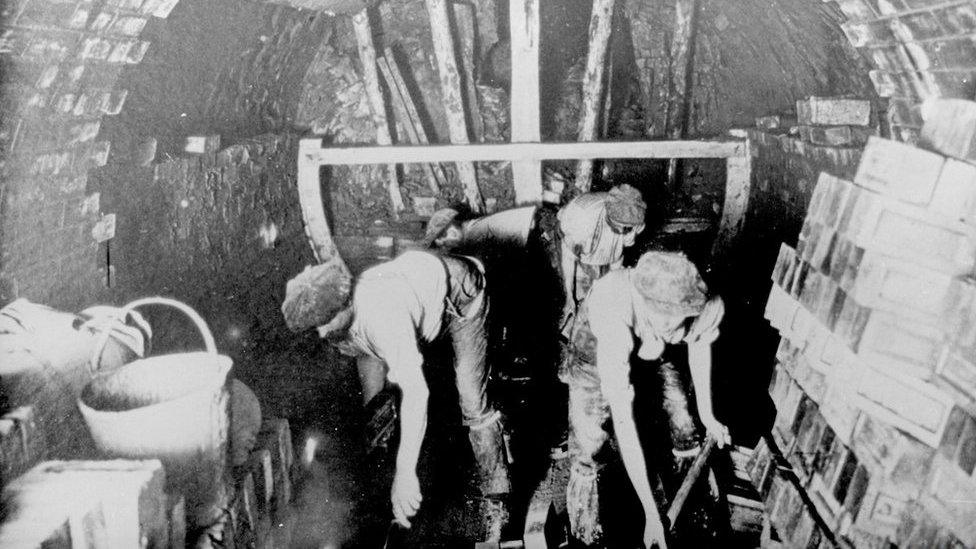Irish soldiers of Battle of Messines commemorated
- Published
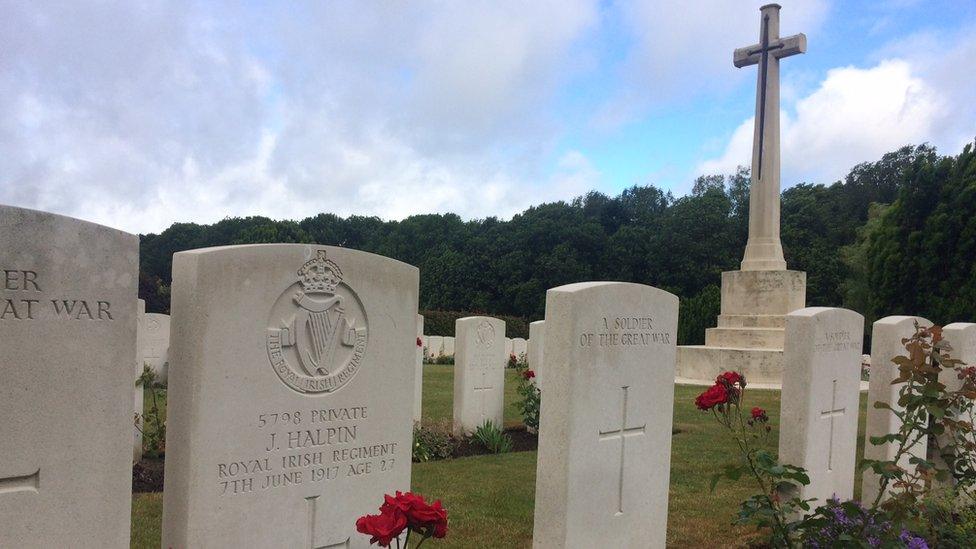
The Battle of Messines Ridge will be commemorated with special ceremonies in Belgium
It was the first time soldiers of the 36th Ulster and 16th Irish Divisions fought side-by-side in World War One.
The Battle of Messines Ridge has been commemorated with special ceremonies in Belgium.
Prince William, Taoiseach Enda Kenny and Princess Astrid of Belgium were among those at the centenary services.
They took place at both the Island of Ireland Peace Park and Wytschaete cemetery.
Messines cententary commemorations
On 7 June 1917, men from the mainly Protestant/unionist Ulster Division and soldiers from the mostly Catholic/nationalist Irish Division marched together along the Kemmel Road into battle at Messines Ridge.
They had earlier left their respective bases - Camp Shankill and Celtic Park.
As they did so, thoughts of home no doubt flashed through their minds.
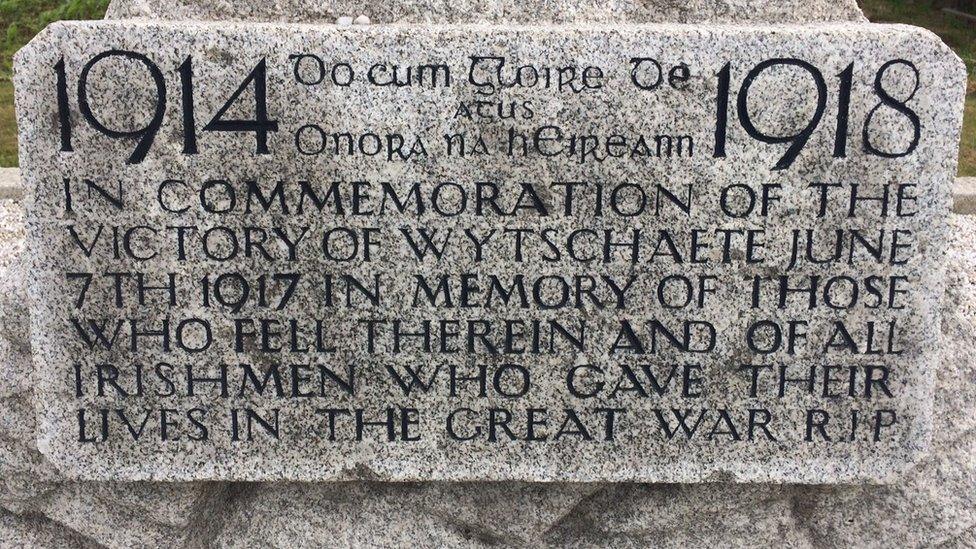
The story was often recounted of how two comrades in arms from opposing traditions set all else aside in face of a common enemy
Not just of family and friends, but of recent tumultuous events in Ireland, such as the Home Rule crisis and the Easter Rising.
For the present, personal feelings around these would need to be set aside while these allies focused on the fighting that lay ahead on Flanders fields.
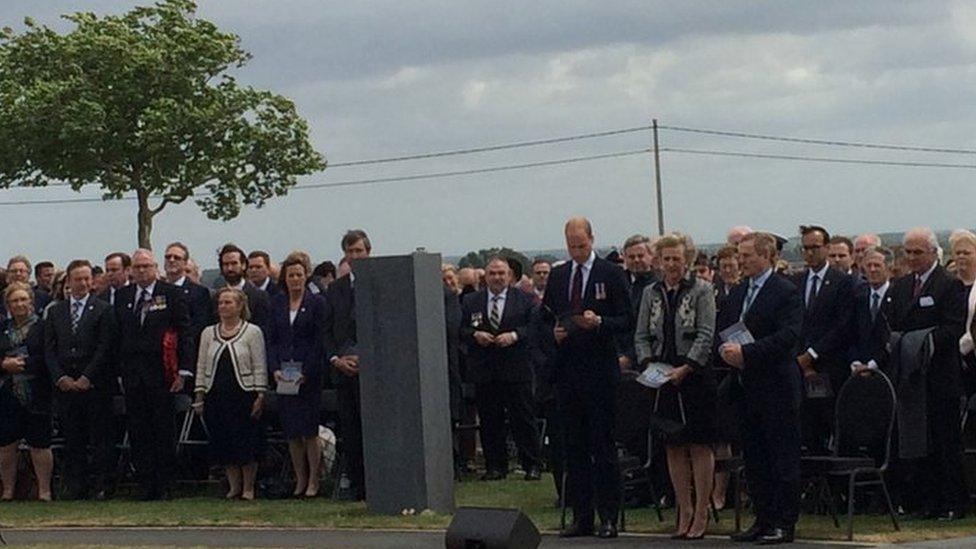
Prince William, Taoiseach Enda Kenny and Princess Astrid of Belgium took part in the centenary services
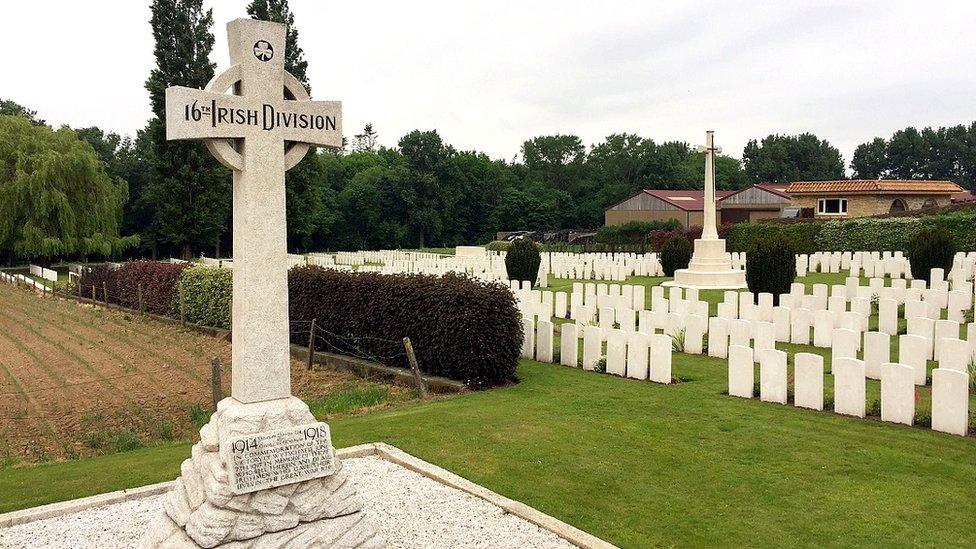
A cross to the 16th Irish Division at Wytschaete cemetery
The front lines were punctuated with familiar names. One particular heavily sandbagged entrenchment was known as Derry's Walls.
The soldiers filed into the trenches better trained and prepared than they had been when the they had fought on the first day of the Battle of the Somme nearly a year earlier.
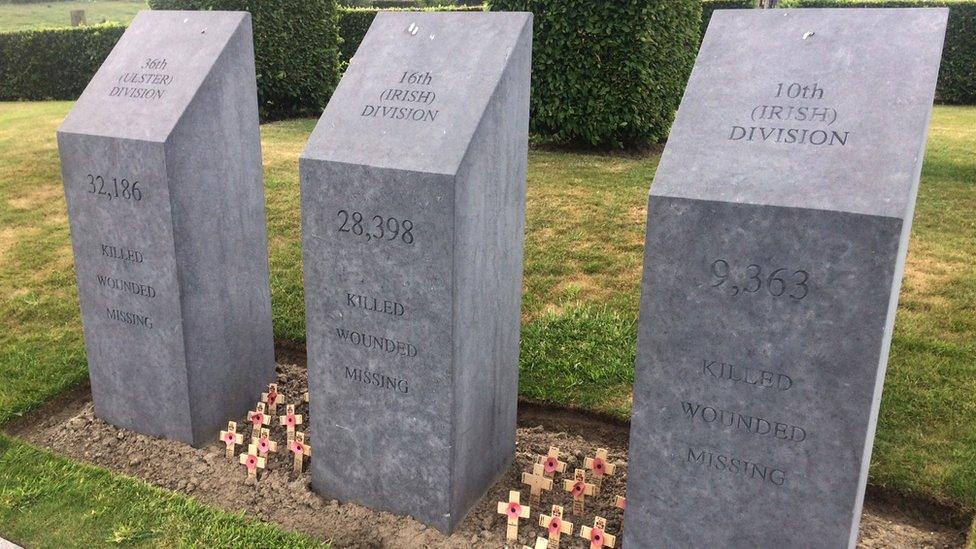
One particular heavily sandbagged entrenchment was known as Derry's Walls
The top brass had learned much from the slaughter at the Somme.
The bravery of the young men who charged the German guns around Thiepval was acknowledged, but the losses could not be sustained and this was damaging recruitment back home.
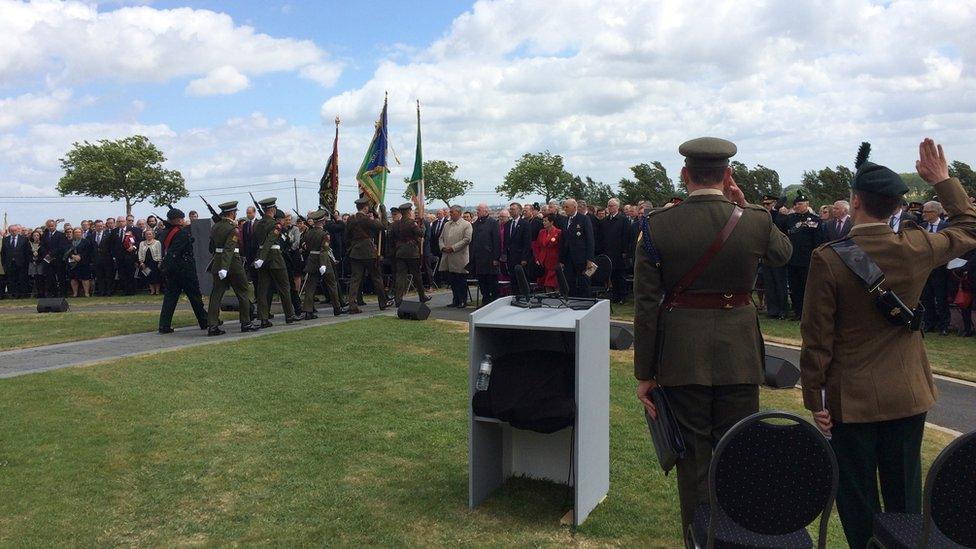
Irish and British soldiers parade together at the commemoration

Remembering those who fell at Messines Ridge
Preparations for the attack at Messines included the construction of roads and the laying of light gauge railways from rear areas to near the front lines for the more rapid supply of ammunition and evacuation of the wounded.
Just after 03:00 on 7 June 1917, the battle commenced and, within hours, many of the planned objectives of the allies had been reached after massive artillery bombardments and assaults by the Irish and Ulster men fighting and dying, shoulder-to-shoulder.

The rescue of Maj Willie Redmond by Pte John Meeke is commemorated
Among the wounded was Maj Willie Redmond, a nationalist MP and an officer in the 16th Irish Division.

It would be many decades later before the first signs of a shared peaceful co-existence on the island of Ireland would come about
He was also a brother of John Redmond, leader of the Irish Parliamentary Party, who had encouraged many Irish nationalists to join the British Army during World War One.
As the major lay seriously wounded in no man's land between the frontlines, he was spotted by Pte John Meeke, a stretcher bearer with the Ulster Division.
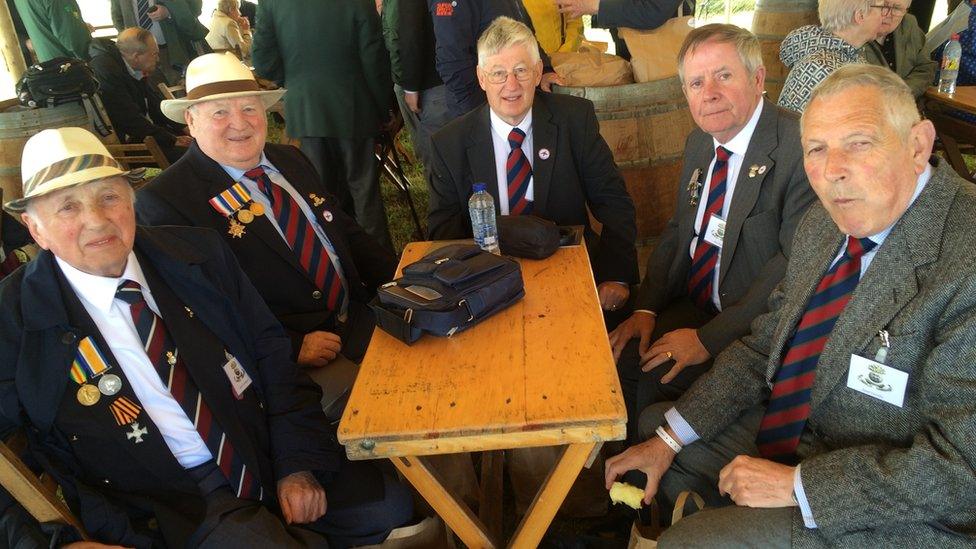
Members of Royal Dublin Fusiliers Association attending the commemoration on Wednesday
He went to the officer's aid and, while coming under heavy enemy machine gun fire, managed to bandage his wounds, being injured himself as he did so.
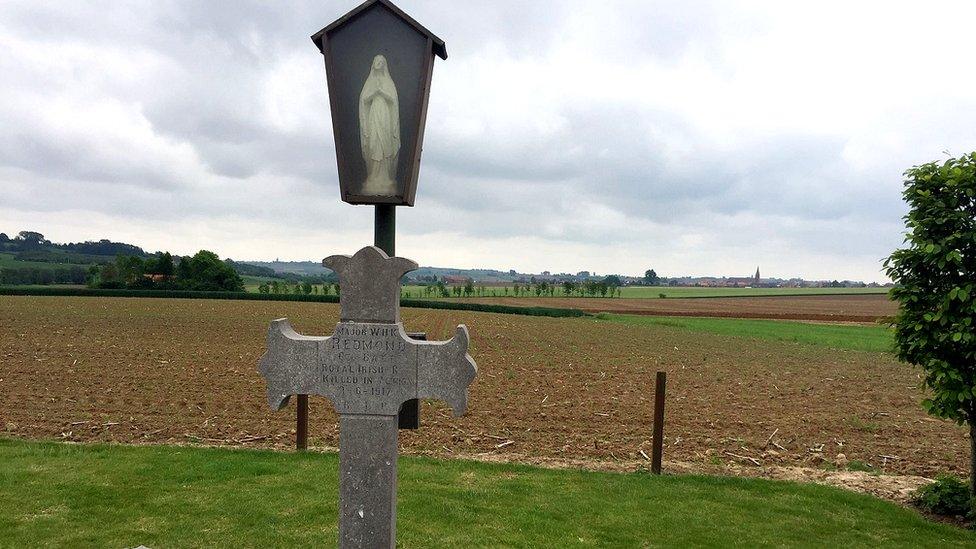
Maj Redmond's grave overlooking the Belgian countryside
Despite being ordered by the officer to leave him and take cover, the County Antrim soldier refused. Pte Meeke was awarded the Military Medal for his bravery, however, after being taken to a field dressing station, Maj Redmond later died from his injuries.
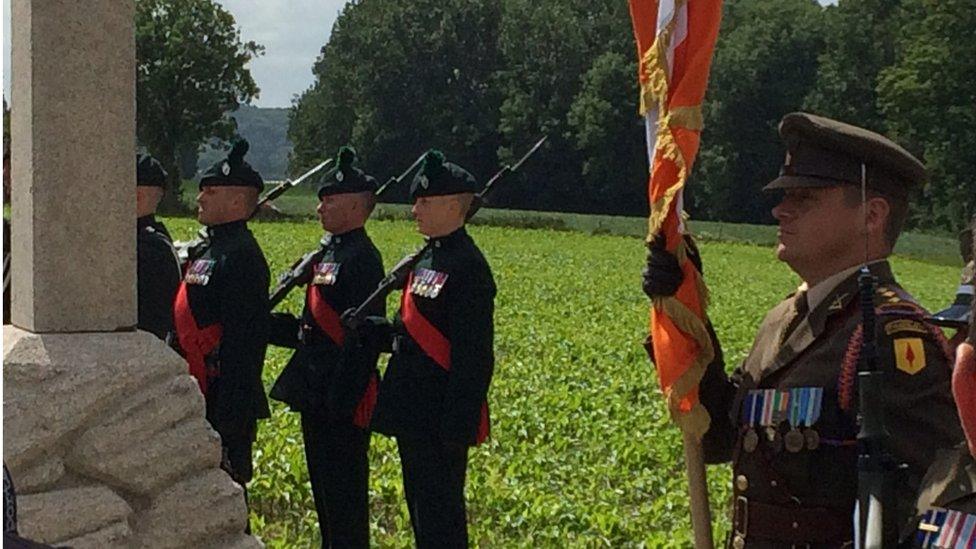
The scene at Wytschaete cemetery
The story was often recounted of how two comrades in arms from opposing traditions set all else aside in face of a common enemy.
In Belgium on Wednesday, those who fell were remembered with a solemn service at Wytschaete cemetery where many of them are buried.
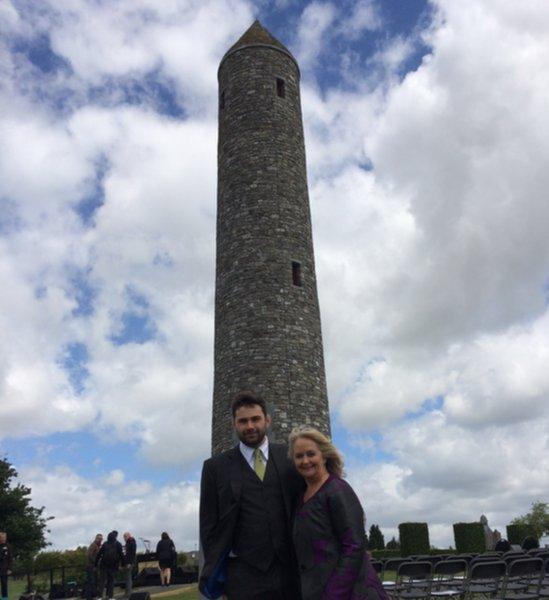
Daire Nolan and his mother, Mary Harte, pictured at the commemoration. Her father, Paddy Harte, former Donegal TD, was instrumental in the creation of the Island of Ireland Peace Park in Messines.
It is a relatively small and unassuming piece of ground by the side of a quiet country road, dotted with row upon row of Commonwealth war graves headstones.
Etched into them, the names and regimental badges of the soldiers from Ireland who are buried there.
Before this, another commemoration was held in the shadow of the round tower which stands in the Island of Ireland Peace Park on a hillside on the edge of Messines village.
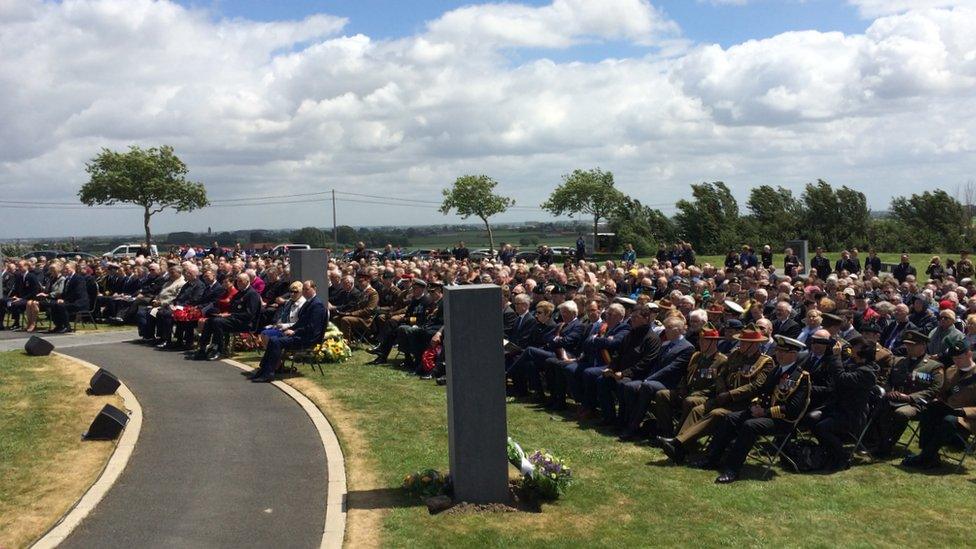
Crowds gathered to pay their respects to those who died
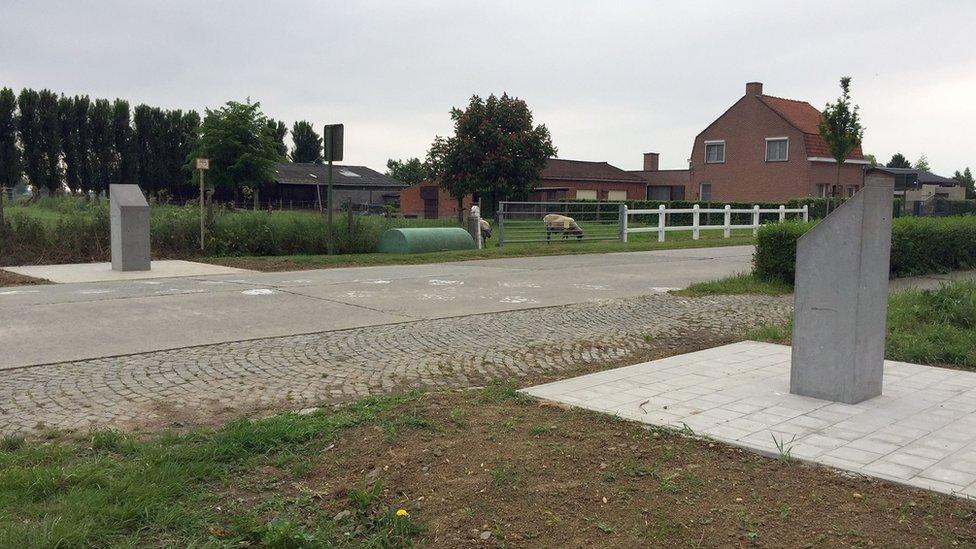
Memorial stones to the 36th Ulster and 16th Irish divisions face each other outside Wytschaete Cemetery
The lush rolling countryside of today is a world away from the barbed wire-strewn, churned-up and cratered landscape of 100 years ago.
At that time, there were great hopes that the shared objectives and experiences of the Ulster and Irish divisions would lead to a better understanding between the two traditions in Ireland.
Despite the sacrifice and huge loss of life throughout World War One, it would be many more decades before the first signs of a shared peaceful co-existence on the island of Ireland would come about.
- Published2 July 2016
